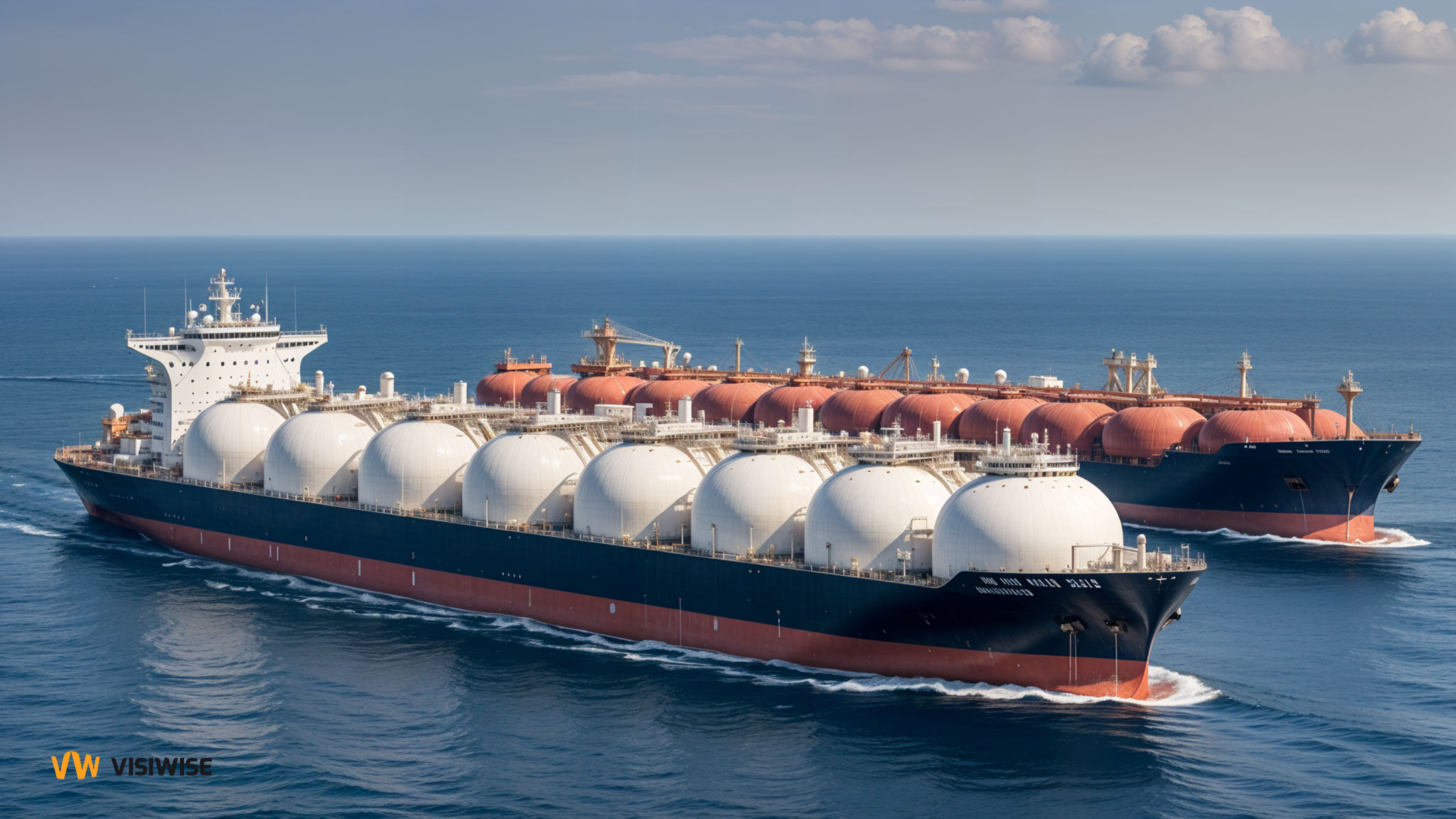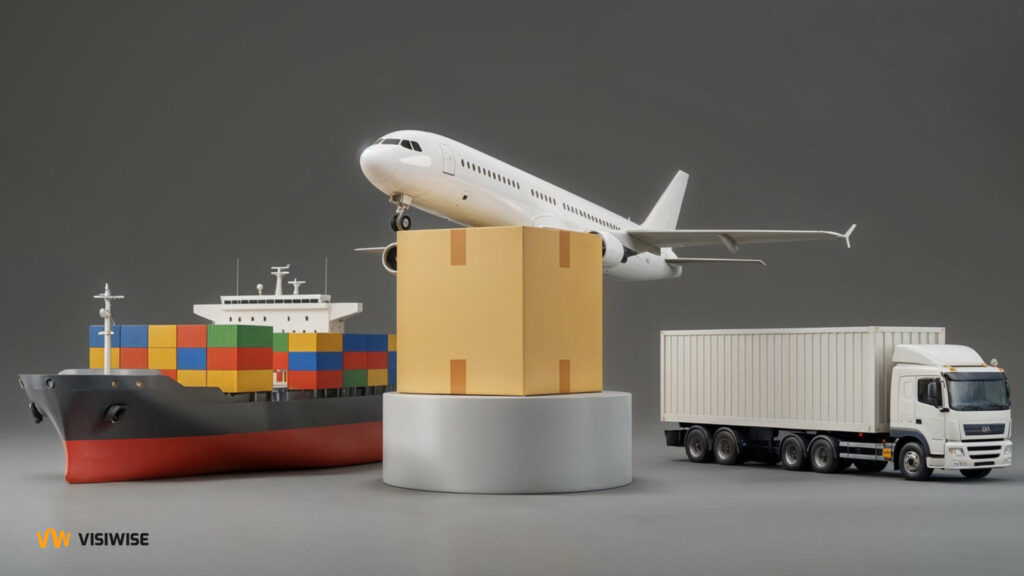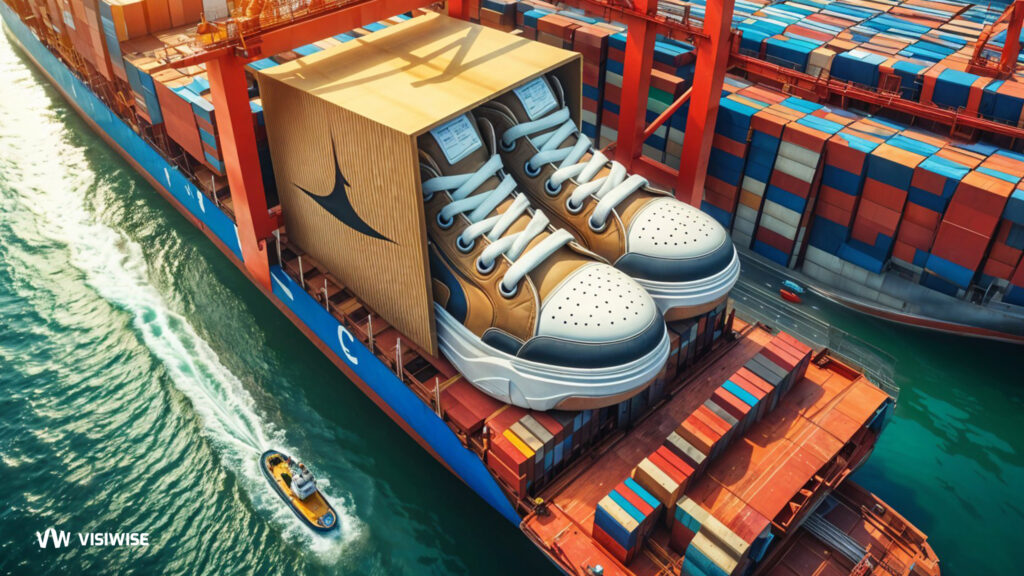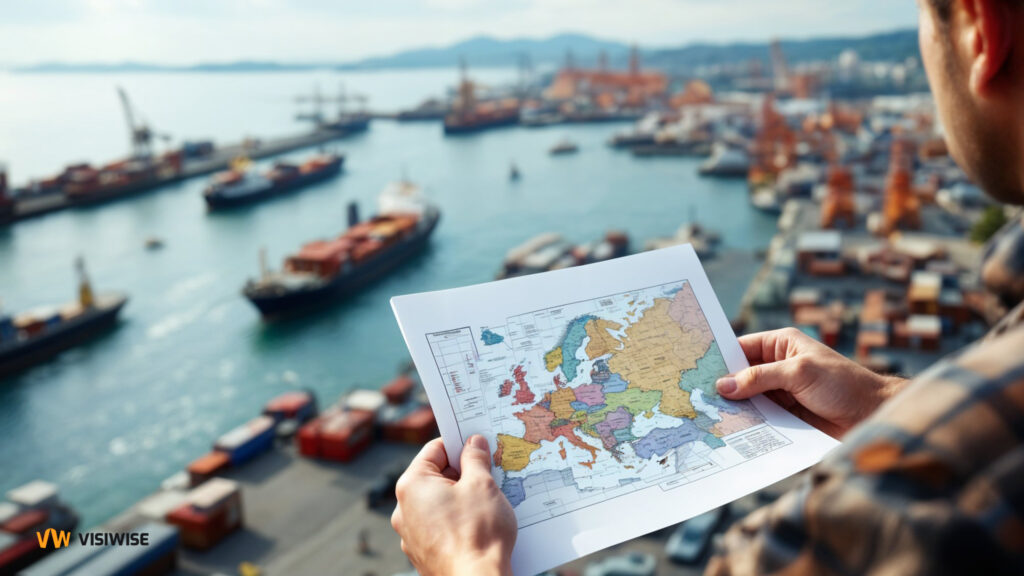In recent years, the transportation of chemical substances has emerged as a paramount concern within the logistics sector. Given their highly hazardous nature, these materials demand stringent safety measures to guarantee secure transit. In this comprehensive guide, we delve into all the vital facets of transporting chemical substances, equipping you with indispensable knowledge for navigating this complex landscape. From regulatory compliance to risk management strategies, we’ll explore it all to ensure you’re well-prepared to handle chemical transport challenges with confidence.
Definition by the Occupational Safety and Health Administration (OSHA)
"A hazardous chemical, as defined by the Hazard Communication Standard (HCS), is any chemical that can cause a physical or a health hazard. This determination is made by the chemical manufacturer, as described in 29 CFR 1910."
Hazardous Chemical Substances and How They Are Categorized
Hazardous chemical substances pose significant risks to human health, the environment, and property if not managed properly. These substances, which can exist in liquid, solid, or gaseous forms, find application across a broad spectrum of industries, ranging from agriculture to manufacturing.
Classification of hazardous chemical substances hinges on a variety of factors, including their physical and chemical properties, as well as their potential impacts on human health and the environment. Typically, these substances fall into distinct categories such as flammable, explosive, toxic, corrosive, oxidizing, radioactive, or biological agents.
Understanding the classification of hazardous chemical substances is essential for ensuring appropriate handling and mitigating risks during transportation. In the chemical transportation sector, possessing the necessary knowledge and skills to manage these materials safely and efficiently is of paramount importance to safeguard personnel and the environment while maintaining regulatory compliance.
Understanding OSHA Requirements: Statutes, Standards, and Regulations for Hazardous Substances
Under the jurisdiction of the Occupational Safety and Health Administration (OSHA), regulations, standards, and statutes delineate requirements pertaining to hazardous substances. These mandates aim to ensure workplace safety and mitigate potential risks associated with the handling and exposure to such materials.
A substance earns the classification of hazardous if it exhibits one or more of the subsequent characteristics:
- Flammable: A substance is deemed flammable if it possesses the propensity to ignite swiftly, potentially leading to fire or explosion hazards within the workplace environment.
- Corrosive: Corrosion is characterized by the gradual degradation or erosion of materials due to chemical reactions with their surroundings. Substances classified as corrosive have the potential to cause significant damage to materials or properties upon contact.
- Toxic: Toxic substances pose a threat to human health, capable of inducing poisoning or adverse health effects upon exposure. Such substances necessitate careful handling and stringent safety protocols to prevent harm to individuals in the workplace.
- Reactive: Reactive substances exhibit a tendency to undergo chemical reactions spontaneously or in response to external stimuli. These reactions can result in the release of heat, gases, or other hazardous byproducts, posing risks to personnel and property.
Hazardous Chemicals: Classification and Safety
Hazardous chemicals encompass a diverse array of substances, each presenting unique risks and safety considerations crucial for safe transportation and handling. Proper classification of these materials is paramount to ensure compliance with regulations and mitigate potential hazards.
According to the Federal Motor Carrier Safety Administration (FMCSA), hazardous materials are classified into distinct categories, each with specific characteristics and associated dangers:
CLASS 1: Explosives – Explosive materials undergo rapid chemical reactions, releasing significant energy. Dynamite, fireworks, and blasting agents are common examples, categorized based on their sensitivity to heat, shock, or friction.
CLASS 2: Gasses – Stored under pressure or as liquefied gases, these substances can be highly flammable, toxic, or both. Propane, oxygen, and chlorine are among the hazardous gases requiring careful handling.
CLASS 3: Flammable Liquids – Easily ignitable at relatively low temperatures, flammable liquids like gasoline and alcohol demand proper storage and handling to prevent fires and explosions.
CLASS 4: Flammable Solids – Solid materials that ignite when exposed to heat sources, such as matches and certain metal powders, fall into this category.
CLASS 5: Oxidizers and Organic Peroxides – Oxidizers release oxygen, promoting combustion, while organic peroxides pose fire and explosion hazards due to their reactivity, commonly used in industrial processes.
CLASS 6: Toxic Materials and Infectious Substances – Harmful when inhaled, ingested, or absorbed, toxic materials like pesticides and corrosive substances, along with infectious substances containing pathogens, pose biological hazards.
CLASS 7: Radioactive Materials – Emitting ionizing radiation, radioactive materials are utilized in medical treatments, research, and nuclear power generation, necessitating strict handling protocols.
CLASS 8: Corrosives – Substances causing severe damage to living tissues and materials, such as strong acids and bases, are classified as corrosives, requiring careful handling to mitigate risks.
CLASS 9: Miscellaneous Dangerous Goods – Encompassing substances like asbestos and environmentally hazardous materials, this category includes items that don’t fit neatly into other classifications but still pose risks during transportation.
Legal Requirements in Global Chemical Transportation
European Regulations for Hazardous Chemical Transportation
Europe’s stringent regulations, including the European Regulation on Classification, Labeling, and Packaging of Chemical Substances and Mixtures (REACH) and the CLP Regulation, set forth criteria for classifying hazardous chemicals. These regulations also dictate labeling, packaging, and documentation requirements crucial for safe transportation.
Global Standards for Hazardous Chemical Classification
The United Nations’ Globally Harmonized System of Classification and Labelling of Chemicals (GHS) provides standardized classifications and labeling practices on a global scale. This system aims to ensure clear communication about chemical hazards and establish uniform requirements for safe transportation worldwide.
International Conventions for Maritime Transportation
The International Convention for Safe Containers (CSC) mandates requirements for containers used in transporting hazardous substances, while the International Convention for the Prevention of Pollution from Ships (MARPOL) sets regulations for preventing pollution during maritime transportation. Compliance with these conventions is essential for upholding safety and environmental protection standards.
Importance of Compliance in Chemical Transportation
Adhering to international regulations and legal requirements is critical for companies engaged in chemical transportation. Compliance ensures safety and environmental protection throughout the transportation process, safeguarding public health and the environment from potential hazards.
Storage
There are several key steps to ensure the safe storage of hazardous chemicals:
- Safe Design, Location, and Installation: Tanks and storage systems should be designed, located, and installed in a way that minimizes risks.
- Separation of Incompatible Substances: Store reactive chemicals separately to prevent interactions.
- Safety Signage: Use appropriate labels and placards to clearly indicate the hazards present.
- Placarding Requirements: All bulk packaging, freight containers, unit load devices, transport vehicles, or rail cars containing hazardous materials must be placarded according to the material’s hazard class. These placards must adhere to specific design and placement requirements.
- Spill Containment and Cleanup: Be prepared for spills with proper containment and cleanup systems.
- Emergency Plan: Have an emergency plan in place to address incidents involving hazardous chemicals.
- Personal Protective Equipment (PPE): Ensure that appropriate PPE is available and used when handling these chemicals.
- Fire-Fighting Equipment: Have easily accessible fire-fighting equipment on hand.
- Security: Secure chemicals to prevent unauthorized access.
- Tank Coating: Use a high-performance coating to protect storage tanks from corrosion. The right coating should be selected based on the specific requirements of the stored chemicals to ensure cost-effective protection. Failure to choose and apply an appropriate liner can lead to contamination and tank deterioration.
Transportation
Transporting hazardous chemicals entails adhering to stringent federal, state, and local regulations. This process necessitates selecting a robust coating that effectively prevents corrosion, maintains cargo purity, and optimizes operational uptime.
Who regulates hazardous material transportation?
The Hazardous Materials Transportation Act (HMTA) is indeed the primary federal law governing the transportation of hazardous materials in the United States. Under this act, various agencies, including the Pipeline and Hazardous Materials Safety Administration (PHMSA) and the Department of Transportation (DOT), oversee and enforce regulations to ensure the safe transport of hazardous materials. Additionally, state and local authorities may have their own regulations that complement or supplement federal requirements.
International Regulations for Hazardous Chemical Transportation
In addition to domestic regulations like the Hazardous Materials Transportation Act (HMTA), there exist various international directives and regulations that oversee the transportation of chemicals across different modes of transport:
- International Air Transport Association (IATA): Known for its Dangerous Goods Regulations, which are based on internationally agreed provisions known as the “ICAO Technical Instructions.” These regulations govern the air transport of hazardous materials.
- International Maritime Dangerous Goods (IMDG): Responsible for regulating the transportation of dangerous chemicals by sea, the IMDG Code sets out guidelines and requirements for the safe maritime transport of hazardous materials.
- ADR (European Agreement concerning the International Carriage of Dangerous Goods by Road): Regulates the transportation of chemicals by road within Europe, ensuring the safe transport of hazardous substances on roadways.
- Convention Covering International Carriage by Rail: Specified in Appendix C, this convention governs the international transport of hazardous substances by rail transportation.
Understanding and complying with these diverse regulatory frameworks are essential. However, it’s just the beginning. It’s equally crucial to be well-versed in the various on-site and off-site hazards associated with transporting chemicals and to know how to prevent them effectively. This knowledge is key to reducing the risk of chemical accidents during transportation.
Preparing Chemical Cargo for Transportation
Preparing cargo for the transportation of chemical substances requires careful attention to safety to mitigate risks to personnel and the environment. Proper classification and packaging of the chemicals are integral parts of this preparation process. Here are key steps for safely and efficiently preparing the cargo.
Identification: The first step in preparing chemical cargo for transportation involves identifying the type of substance, its properties, and associated risks. This facilitates classification according to international regulations and determines packaging and labeling requirements.
Classification and Labeling: Chemical cargo must be classified according to the Globally Harmonized System of Classification and Labeling of Chemicals (GHS). This system establishes criteria for identifying hazards and risks. Additionally, clear and visible labeling is crucial to convey information about the content and associated hazards effectively.
Packaging: Chemical substances must be packaged in suitable, sturdy, and secure containers to prevent leaks or spills during transport. Compliance with international regulations for the transport of dangerous goods is essential to ensure the safety of personnel and the environment.
Documentation: Carrying the necessary documents on board, such as the safety data sheet of the chemical substance, is essential. These documents provide detailed information about the product, its risks, and necessary safety measures, ensuring regulatory compliance and facilitating emergency response procedures.
Safety Standards and Prevention Measures for Chemical Transportation Across Different Modes
In every sector of the industry, transportation via various modes requires strict adherence to safety standards. Here’s a compiled checklist for transporting chemicals through each mode:
Over the Road Transport Hazards:
Accident Causes: Overturning, overfilling, vehicle maintenance issues, inadequate inspection, lack of training.
Prevention:
- Thorough inspection of the vehicle’s condition, including tires, valves, electrical wiring, seals, wipers, lights, etc.
- Provision of fire extinguishers.
- Documentation of previous loads and tank cleanliness.
- Availability of emergency kits with safety gear and chemical information sheets.
Rail Transportation of Dangerous Materials:
Accident Causes: Derailment, collisions, insufficient inspection and maintenance, use of unfit equipment and tank cars.
Prevention:
- Proper labeling of hazardous cargo.
- Comprehensive rail inspections.
- Confirmation of appropriate load sizes.
- Immediate availability of emergency response teams.
- Preferential routing through unpopulated areas.
- Consideration of tank lining for corrosive substances.
Transportation of Hazardous Chemicals by Water:
Accident Causes: Inadequate inspection and maintenance, lack of operator training.
Prevention:
- Appropriate hull design and venting.
- Strict adherence to navigational safety protocols.
- Establishment of robust emergency response procedures.
- Utilization of cargo tank coatings engineered for aggressive chemicals and cargo purity maintenance.
Safety Precautions for Transporting Chemicals and Proper Storage
Transporting hazardous chemicals demands meticulous attention to safety protocols to mitigate risks and ensure regulatory compliance. Here, we outline comprehensive guidelines for safe chemical transportation across various modes and storage practices:
- Avoid Transporting Hazardous Chemicals With Food: Transporting hazardous chemicals in containers previously used for food carries inherent risks of contamination. The Federal Food, Drug, and Cosmetic Act (FDA) imposes stringent regulations to uphold food safety during transportation. Adhering to these regulations necessitates:
- Maintaining proper refrigeration or temperature control to preserve food quality.
- Effective management of storage facilities utilized during transportation to prevent cross-contamination.
- Implementation of rigorous loading and unloading practices, including thorough sanitation of equipment.
- Facilitating seamless communication between shippers, transporters, and receivers to ensure compliance with food safety standards.
- Follow the Dangerous Goods Segregation Rules for Carrying Mixed Classes of Hazardous Chemicals: The transportation of hazardous chemicals demands meticulous attention to segregating incompatible substances to prevent potential chemical reactions and hazardous incidents. Key considerations include:
- Storing incompatible substances separately to mitigate the risk of chemical interaction.
- Adhering to established principles of dangerous goods segregation, such as avoiding the storage of strong acids with strong alkalis.
- Employing specialized storage facilities or detached buildings for highly reactive substances, such as organic peroxides and pyrophoric materials.
- Ensuring strict compliance with segregation guidelines outlined by regulatory bodies to minimize risks during transportation and storage.
- Secure Chemicals Against Movement on Transportation Vehicles: Handling and transporting hazardous materials pose inherent risks, necessitating robust measures to prevent accidents and spills. To minimize these risks, it is essential to:
- Properly load and secure chemical containers to prevent movement, sliding, or bouncing during transportation.
- Utilize appropriate bracing mechanisms to ensure stability and minimize the risk of container displacement or damage.
- Implement stringent safety protocols to safeguard against potential hazards associated with chemical transportation, thereby mitigating risks to personnel and the environment.
- Keep a Record of the Substances You are Carrying: Accurate documentation of transported substances is indispensable for ensuring regulatory compliance and facilitating effective emergency response procedures. Key measures include:
- Maintaining comprehensive shipping records detailing the nature, quantity, and characteristics of transported chemicals.
- Providing written emergency instructions outlining appropriate response protocols in the event of spills, leaks, or other hazardous incidents.
- Following manufacturer-recommended guidelines specified in safety data sheets to ensure safe handling, storage, and transportation practices.
- Confirm You Have the Required Signs and Proper Labeling (Placards and Markings): Proper labeling and signage are fundamental aspects of hazardous material transportation, serving as vital indicators of potential risks and hazards. Essential considerations include:
- Ensuring all hazardous materials are appropriately labeled to convey critical information, including the chemical name, manufacturer details, and associated hazards.
- Adhering to placarding requirements outlined by regulatory authorities to facilitate the safe transport of hazardous materials.
- Maintaining compliance with established labeling standards to mitigate risks and enhance safety measures during transportation and storage.
- Establish an Emergency Response Team:
- Maintaining a dedicated emergency response team comprised of specialized personnel is paramount to effectively managing hazardous incidents during chemical transportation.
- Having well-defined emergency procedures and trained response teams in place is invaluable for swiftly addressing spills, leaks, or other hazardous incidents.
- In the event of a spill, the immediate priority is effective communication and risk assessment to determine the appropriate response actions and minimize potential impact.
- Implement Corrosion Control Measures for Roads and Rail Transport:
- Incorporating corrosion control measures is essential to safeguarding transportation infrastructure and vehicles from chemical-induced degradation.
- Utilizing polymeric linings is a crucial aspect of corrosion control, offering robust protection against chemical attacks for vehicles and storage containers.
- Equally important is the protection of surrounding areas, including concrete tank pads, flooring, secondary containment systems, and wastewater areas, from corrosive chemical exposure.
- Implementing secondary containment systems, such as drip trays or bunds, is essential to prevent spills, leaks, and chemical migration into concrete surfaces.
- These measures are particularly critical for containing aggressive chemicals such as strong acids, alkalis, gases, solvents, and oxidizers, thereby minimizing environmental contamination and infrastructure damage.



